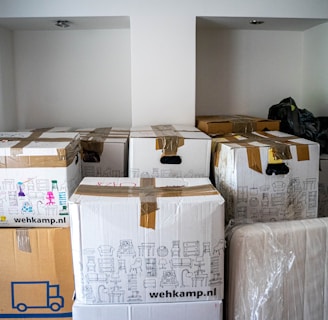Move-In/Move-Out Coordination
Behind every door, there's a story... and a to-do list. From Welcome Mats to Farewell Notes: The Art of Move-In/Move-Out Coordination
MANAGER'S CORNERBLOG
2/24/20253 min read


From Welcome Mats to Farewell Notes: The Art of Move-In/Move-Out Coordination
Move-ins and move-outs are the bookends of a tenant’s journey in your building. Done right, they leave tenants with a positive impression—whether they’re just arriving or heading off to greener pastures (or just across town). Done poorly, they can lead to chaos, complaints, and a never-ending parade of “But I didn’t cause that scratch!” arguments.
Let’s break down how to master move-ins and move-outs with professionalism, humor, and a touch of sanity.
1. Inspections: The Sherlock Holmes of Property Management
Inspections are your chance to be thorough. For move-ins, document the unit’s pristine condition (or lack thereof) with photos and checklists. For move-outs, compare notes and identify wear and tear versus damage.
Humorous Take:
Think of yourself as a detective. The mystery? Who left that mysterious stain in the fridge. (Spoiler: It wasn’t you, but you’re the one who has to solve it.)
2. Scheduling Moves: The Calendar is Your Best Friend
Move-in day can feel like a parade—only less organized and with fewer floats. Stagger move-in/move-out times to avoid elevator gridlock, hallway traffic jams, and territorial disputes over parking spots.
Pro Tip:
Create a move-in packet with a clear schedule, elevator reservation info, and “Do’s and Don’ts.” Example: Do bring pizza for your movers. Don’t scratch the elevator walls.
3. Clean and Ready: The Gold Standard
A sparkling clean, freshly repaired apartment is the best welcome gift you can offer. Coordinate with cleaning services and maintenance teams to ensure the unit is picture-perfect before move-in day.
Humorous Take:
Remember: tenants might forgive a minor hiccup, but they won’t forget finding someone else’s sock in the closet.
4. Documentation: Photos or It Didn’t Happen
Always document the unit’s condition before and after occupancy. Take pictures of every room, appliance, and corner—yes, even the one behind the fridge.
Pro Tip:
Share a copy of the inspection report with tenants so they know exactly what was noted. Transparency is your secret weapon against disputes.
5. Security Deposits: The Refund Tango
Returning a security deposit is a delicate dance. Deduct for damages if necessary, but be fair and clear about deductions. Always itemize charges and provide receipts if required.
Humorous Take:
Think of yourself as the Robin Hood of deposits: taking from the stained carpets and giving back to the deserving tenants.
6. Instructions: The Tenant’s Guide to Moving Bliss
Provide a handy move-in/move-out guide that includes:
Key pick-up/drop-off instructions.
Utility transfer details.
Building rules for moving day.
Emergency contact info.
Bonus Tip:
Add a “Welcome/Goodbye Checklist” for tenants. Make it as simple as:
Move-In: “Don’t forget to test your keys!”
Move-Out: “Don’t forget your pet fish!”
7. Repairs and Maintenance: The Fix-It Phase
Turnovers often require minor (or major) repairs. From patching nail holes to replacing worn-out appliances, this phase ensures the unit is ready for its next chapter.
Humorous Take:
When tenants ask, “How soon can I move in?” resist the urge to reply, “As soon as the drywall stops crying.”
8. Record Updates: Keep the Paper Trail Tidy
Update tenant records, lease agreements, and any other paperwork. This ensures your records are accurate and your property management system stays current.
Pro Tip:
A digital tenant management system can save your sanity. Goodbye, paper mountain; hello, organized bliss.
9. Handling Questions: The Therapist Role
Moving is stressful, and tenants will have questions—lots of them. Be patient, clear, and empathetic, even when they ask for the third time where to park the moving truck.
Humorous Take:
Channel your inner calm and repeat: “There’s no such thing as a silly question, but there are silly places to park—like in front of the fire hydrant.”
10. Utilities and Services: Smooth Transitions
Assist tenants in transferring utilities, internet, and other services. A simple checklist or guide can save both of you from last-minute panic.
Pro Tip:
Partner with utility companies to provide pre-filled forms or online links for easier transitions.
Fostering Positive Transitions
Move-ins and move-outs can be hectic, but they’re also opportunities to make a lasting impression. By staying organized, communicating clearly, and handling logistics like a pro, you can turn these transitions into smooth experiences for everyone involved.
Final Thought:
Moving is like a roller coaster: thrilling, stressful, and occasionally stomach-churning. As the operator of this ride, it’s your job to ensure a safe, smooth journey—and maybe even a few laughs along the way.
